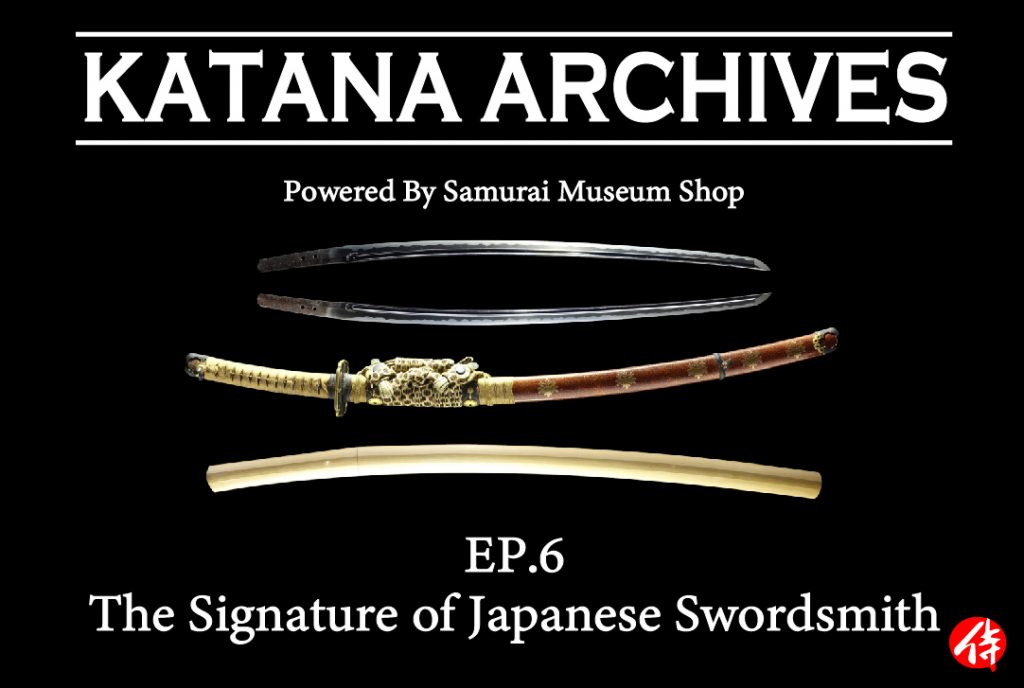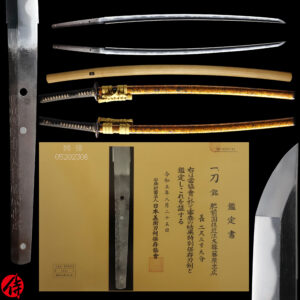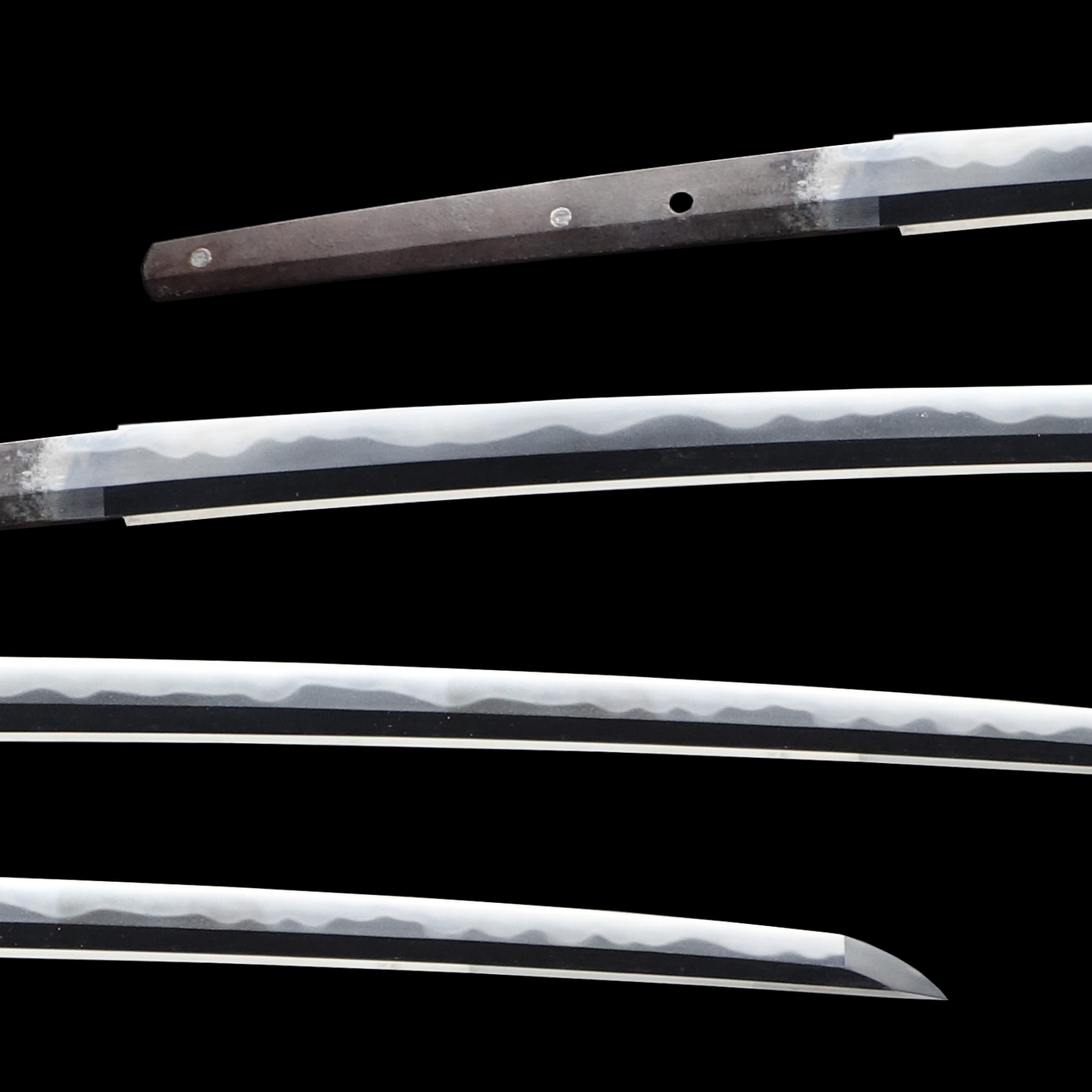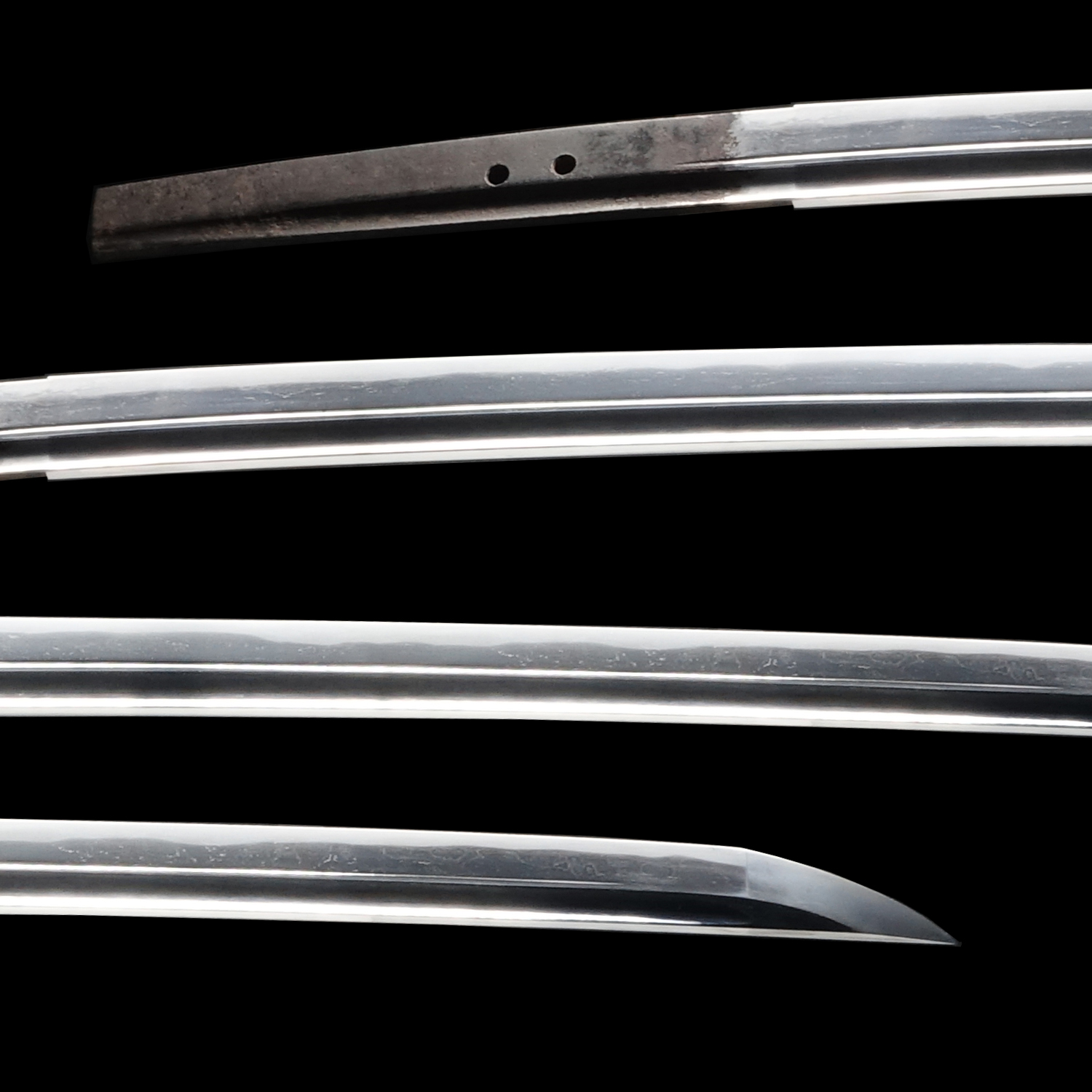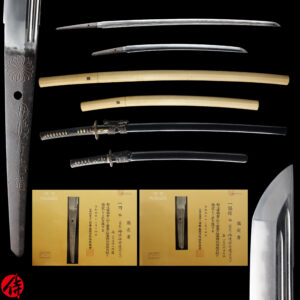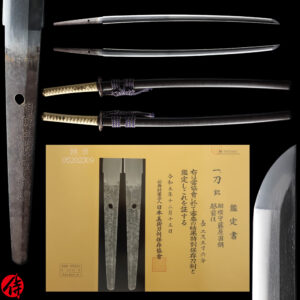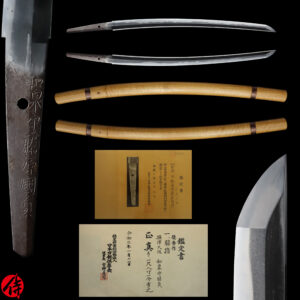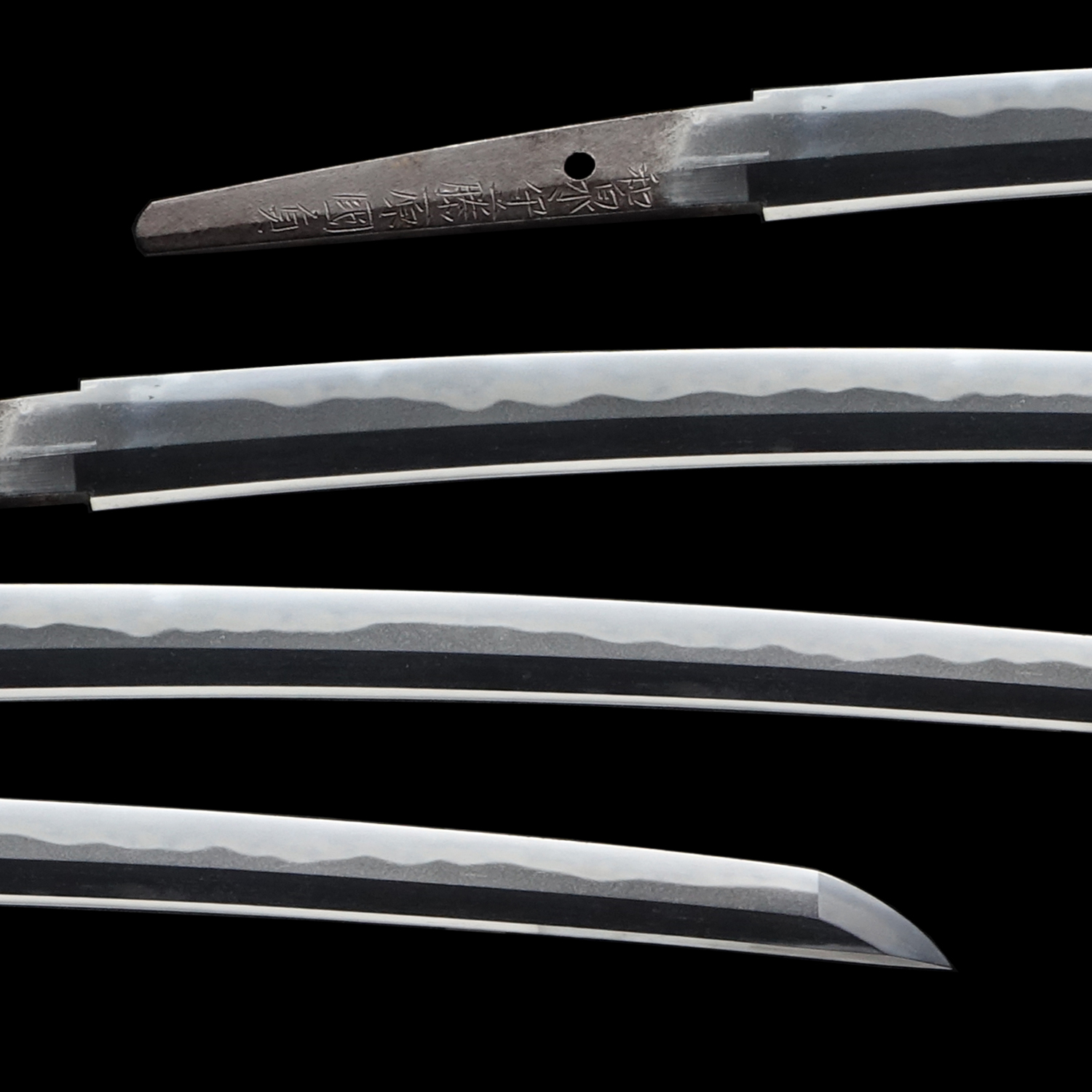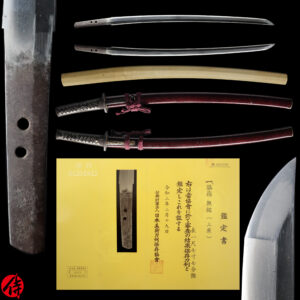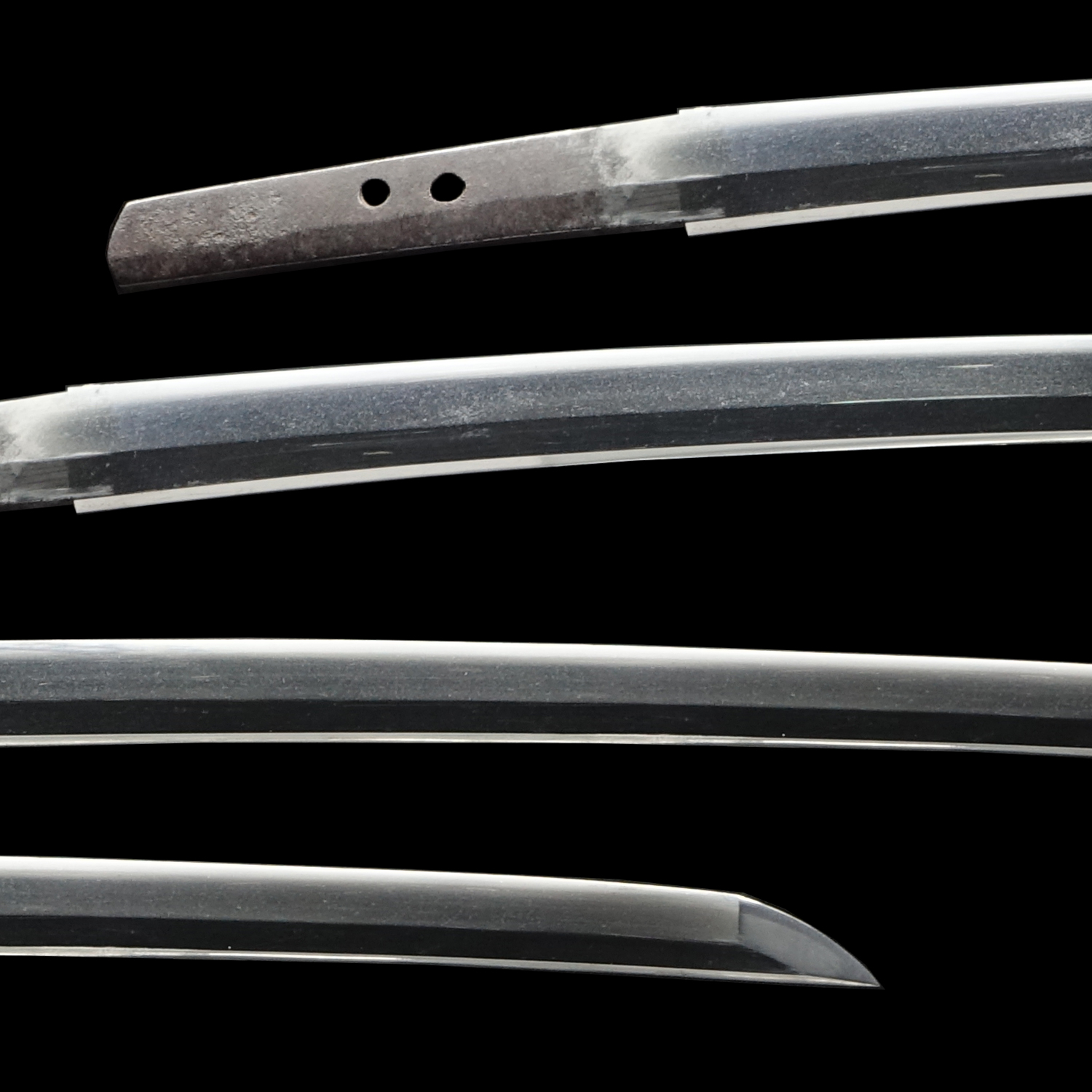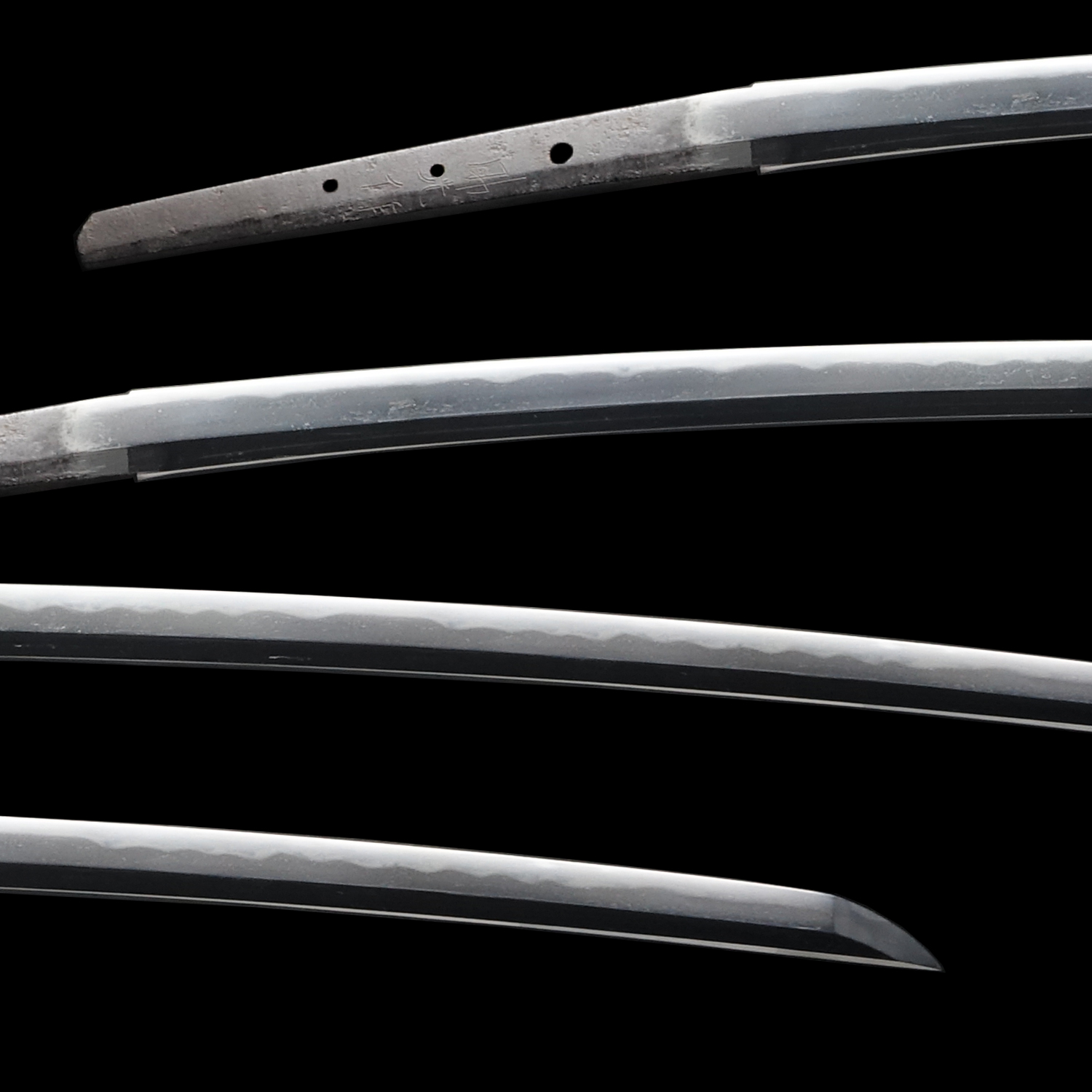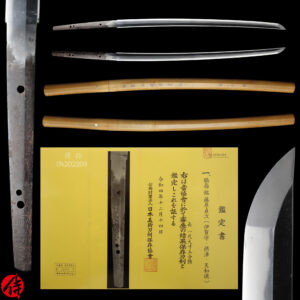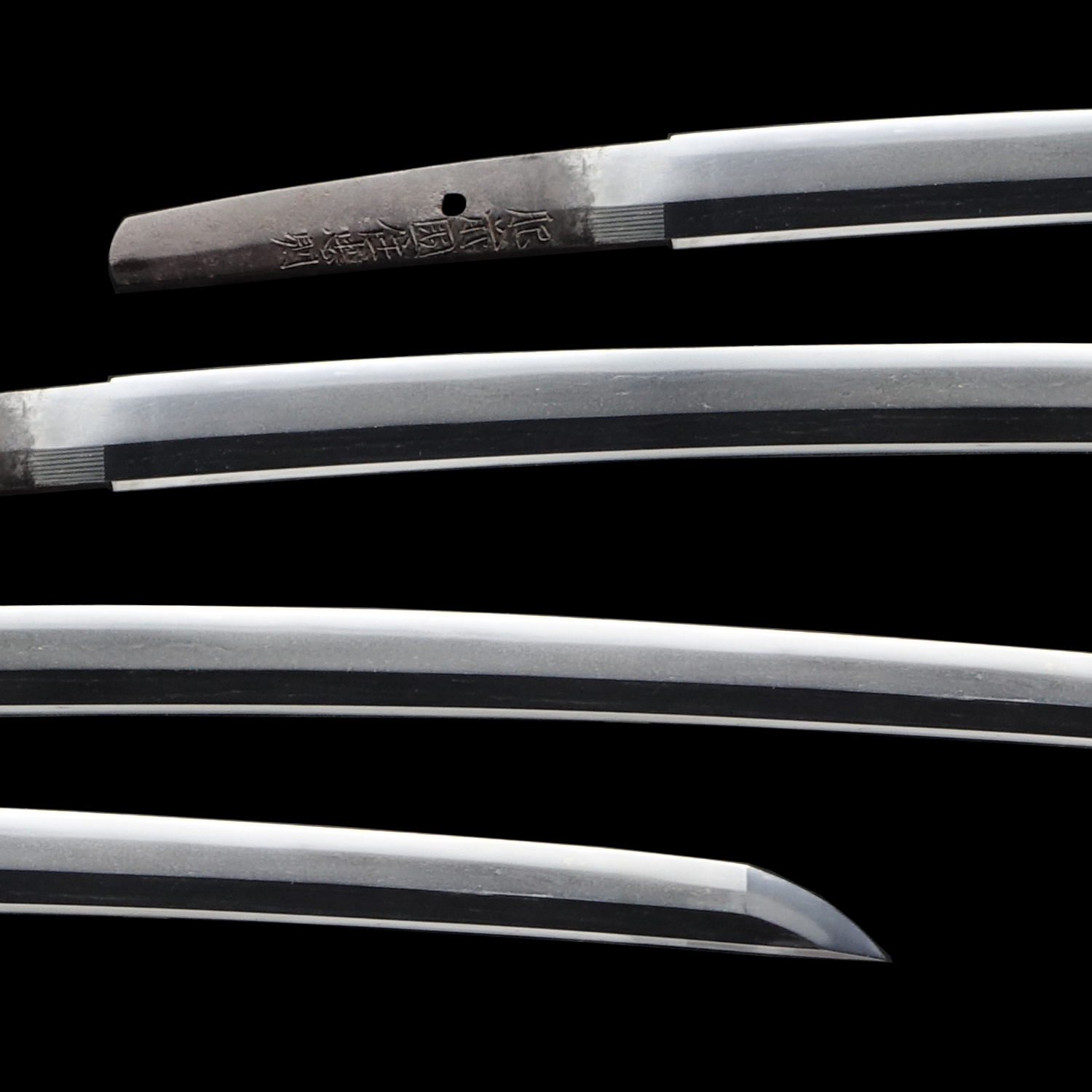Episode 6: The Signature of Japanese Swordsmith
Welcome back to another episode of Katana Archives. Today, we would like to talk about one of the Katana’s features, which beholds among one of the most profound expertise, MEI, the signature of Japanese swordsmith.
INDEX
Ⅰ, What is MEI?
1) The Name of Swordsmith
2) Year and Month / Place of Origin
3) Owner’s name/ Client’s name
Ⅱ, What does MUMEI (Unsigned) mean?
1) Sword as Dedication to a Higher Person
2) OH-SURI-AGE(Heavily-Brushed-Up)
3) The swordsmith’s orientation
Ⅰ, What is MEI?
MEI, in Japanese, typically refers to a carving of letters that represents a particular image. In terms of antique Japanese swords, MEI is a carving on NAKAGO(茎; Root), the bottom part of the Japanese sword covered with the grip, Tsuka (柄). Since the 8th century, following the TAI-HO Edict by the Imperial government, it became legally compulsory to carve a MEI on each NAKAGO, which made MEI common among Japanese blacksmiths. Some MEI was signed by a form of gold/silver inlay or red lacquered paint. The forms of MEI changed over time.
There are various types of MEI. Below are some of the most likely examples of MEI and how they came out.
1) The Name of Swordsmith
This one, we suppose, does not take much to explain. In most cases, MEI should represent the person who made the sword. Most MEI works were carved by the swordsmiths themselves, while there were also some cases where they were done by their apprentices or people who had appraised the swords and claimed them to be the ones made by renowned swordsmiths. Some swordsmiths would prefer carving their official titles given by their lords, the Japanese emperor of their era, or their master from school. It should typically go as such, “IZUMINOKAMI(Title) KANESHIGE (Entitled Name)” or just “KANESHIGE.”
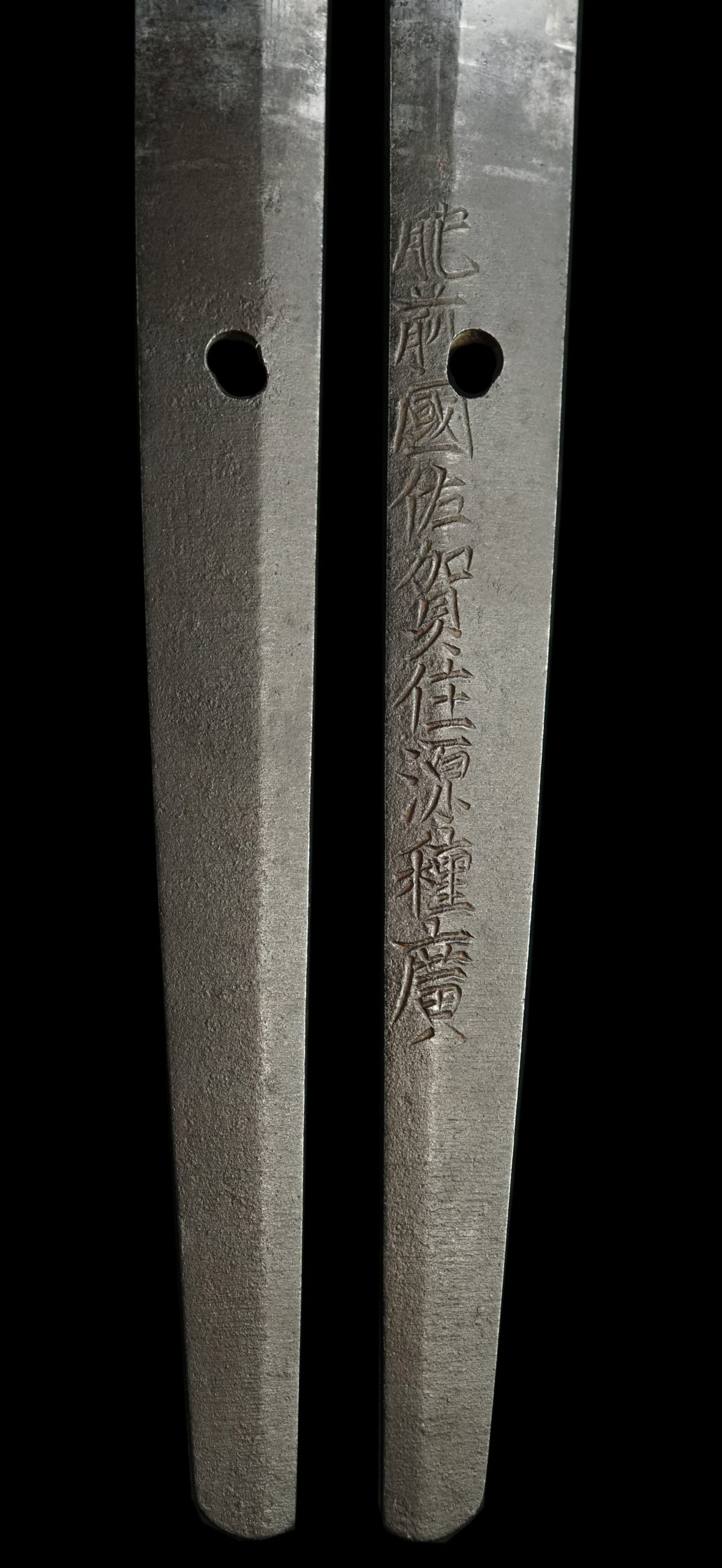
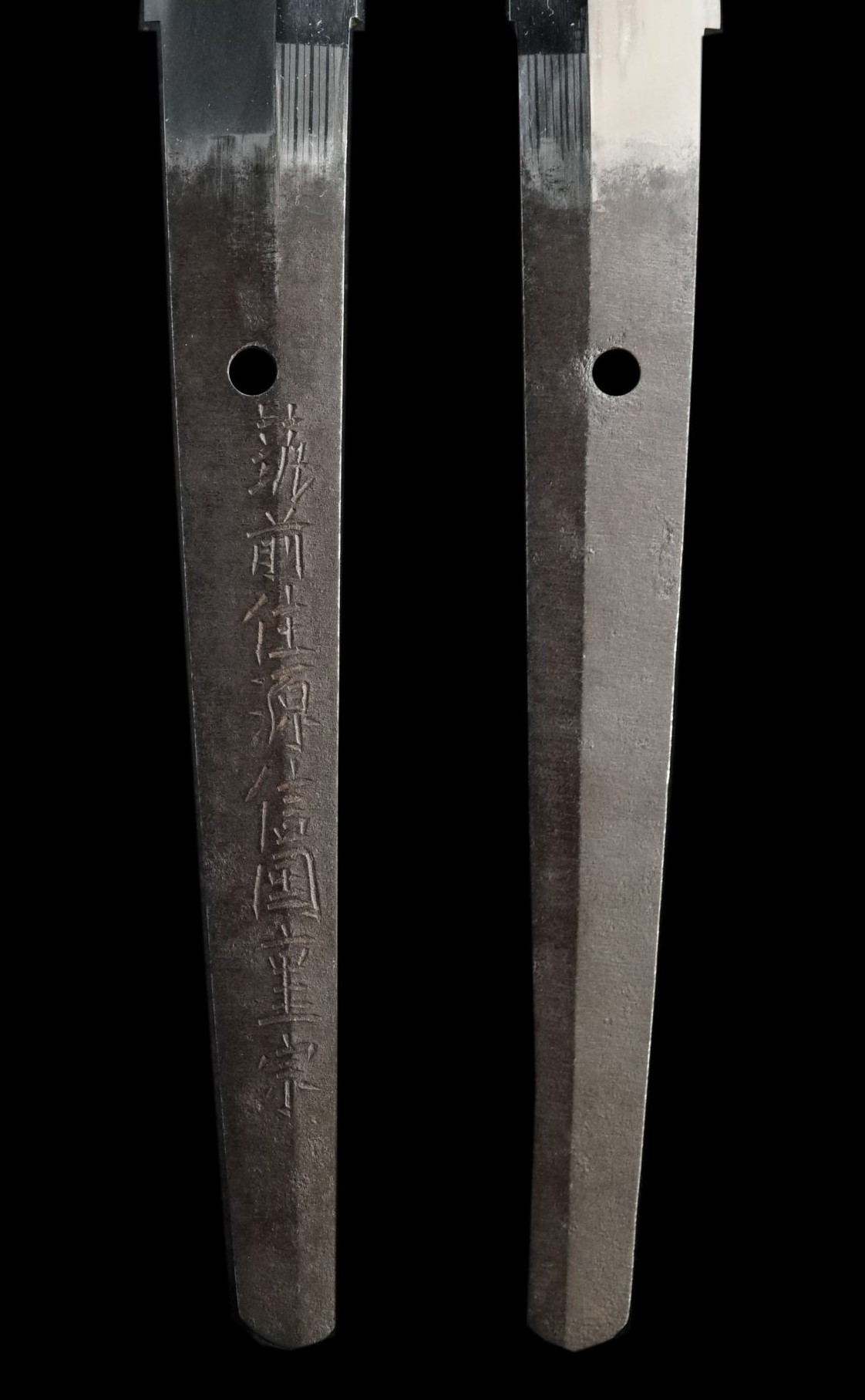

2) Year and Month / Place of Origin
Some MEI also says when the sword was forged, or where it was made. Date of origin was traditionally carved following the Japanese imperial calendar. Thus, they should go like “KAN-EI 4th (Year)/ August (Month)“ and such. Place of origin, on the other hand, depends on the individuals. It should typically go like ‘ECHIGOKOKU (Province) FUNAIJYU (Region) KANEAKI (Entitled Name)”.
Interestingly, most of the swords that have a month in their signatures say either February or August. Japanese swordsmiths signed February on his work when finishing it after the winter solstice. And he signed August when completing his swords after the summer solstice. This fact suggests that even if you see the signature that says either February or August, it doesn’t necessarily mean the blade was forged in that month.

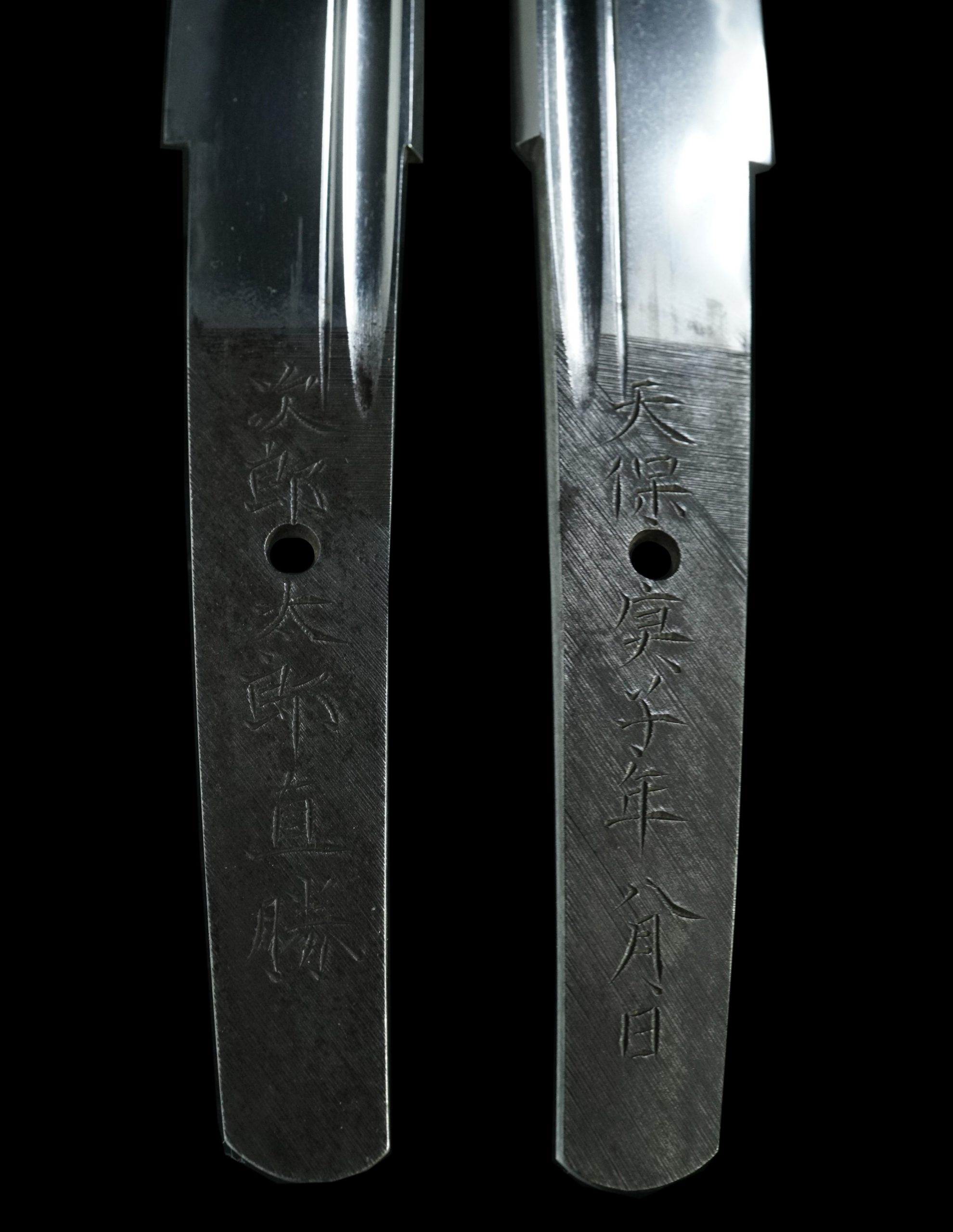
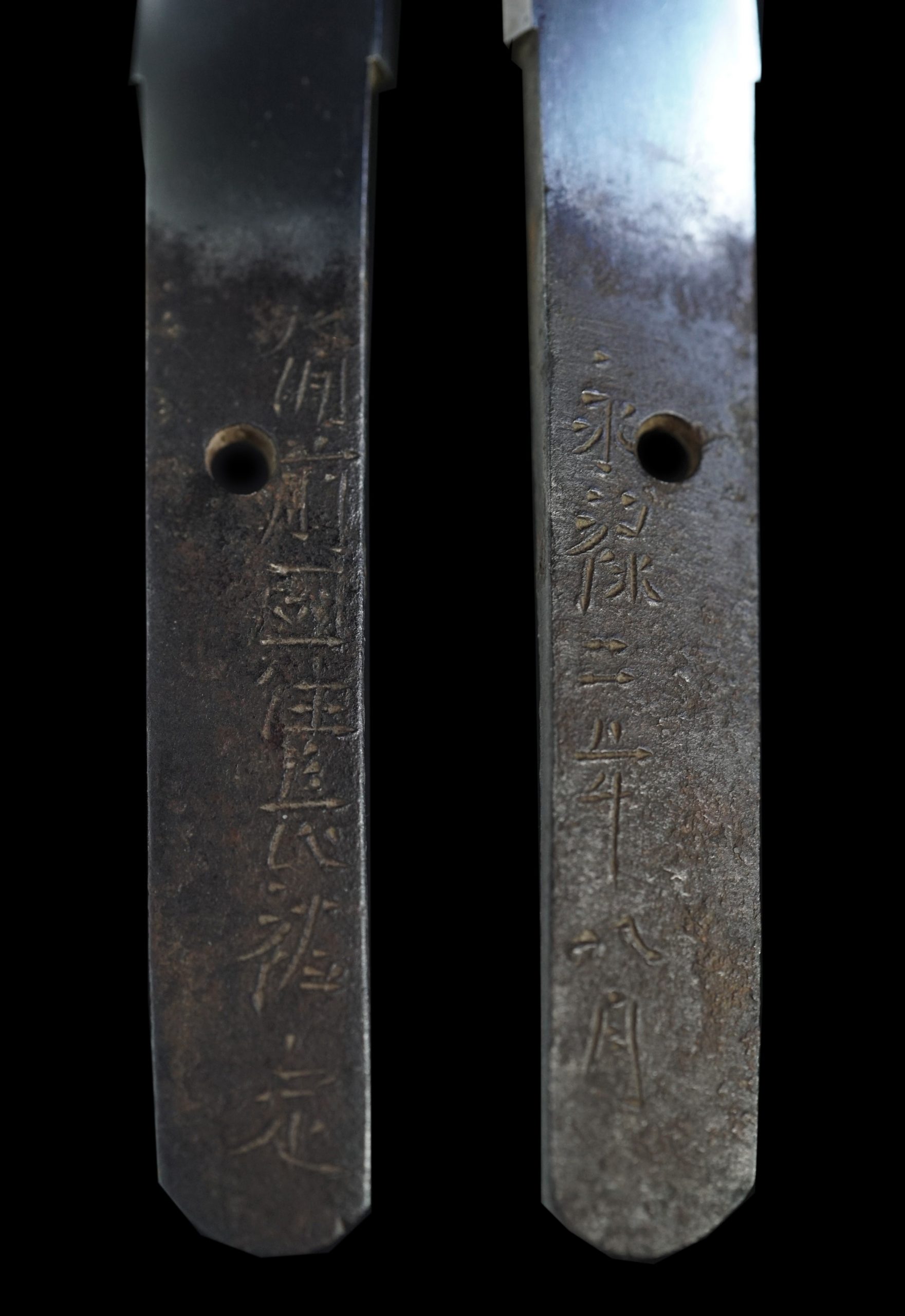
3) Owner’s name/Client’s name
Swordsmiths also carved their patrons’ names, as they had so much respect on the smiths that they would want to claim their ownership. Even in this instance, however, it is still possible for professionals to detect the swordsmiths. They are usually called Shoji-Mei.
2, What does MUMEI (Unsigned) mean?
At this point, we are aware that many of you might assume that Katana that does not have MEI(singnature) is less valuable. Luckily, even if your sword or your favorite item at Samurai Museum Shop is MUMEI (Unsigned), they are also precious and valuable. There are a few reasons behind. As a form of art, Katana, not to mention its martial strength, also had a very well-acknowledged value as a collectible item. Therefore, there were also times when the swordsmiths had chosen not to carve their MEI.
Here are a few instances when the valuable swords happen not to have a MEI.
1) Sword as Dedication to a Higher Person
During the Samurai times, the famous swordsmiths would often dedicate their Katana to the lords’ power in their locals or that of the Japanese court nobles.
In this instance, swordsmiths were traditionally not allowed to carve their names. They would believe that their Mei might be disturbing when representing those higher powers. To stay humble and respectful toward their master, they kept the sword anonymous, although experts could tell who had made them.
2) OH-SURI-AGE(Heavily-Brushed-Up)
When they cut the handle’s core (Nakago) off to make it smaller, they would call it Suri-Age.
Suri-Age was being done for a few different purposes. For instance, dating back to the Muromachi period (1333-1572 A.D) towards the end of the Warring States period (16C – early 17C), many swordsmiths had made OH-SURI-AGE swords.
OH-SURI-AGE means to downsize Tachi’s body by cutting the Nakago, so it becomes the size of Uchi-Gatana (Generally referred to as Katana from this era), the middle-sized Japanese sword. In many cases when Oh-Suri-Age, swordsmiths had to cut it so much, to the point where they had to cut the sword’s signature. It was generally due to the change in Samurais’ combat styles as they gradually switched from cavaliers to ground soldiers, which means that the long Tachi swords did not work the way they did before. From this time on, Samurais began to use more Uchi-Gatana, and the Oh-Suri-Age swords to fit the new standard.
On top of that, many Samurais in the Edo period had to take their swords to Suri-Age since the government restricted the public possession of long Katana. For that reason, more Katana were made shorter with the handles cut off.
There are some ways to tell Suri-Age swords from other unsigned swords. If you look at the sword’s Nakago, you can see that there is a hole where the nail comes in and hold the Nakago’s cover, Tsuka tied to its core. We call this hole Nakago-Ana. Some swords have more than one Nakago-Ana because they had to gauge a new one as the Tsuka should fit a different weight balance. Also, if the rust on the Nakago appears differently, it is a good sign that the sword is a Suri-Age sword.
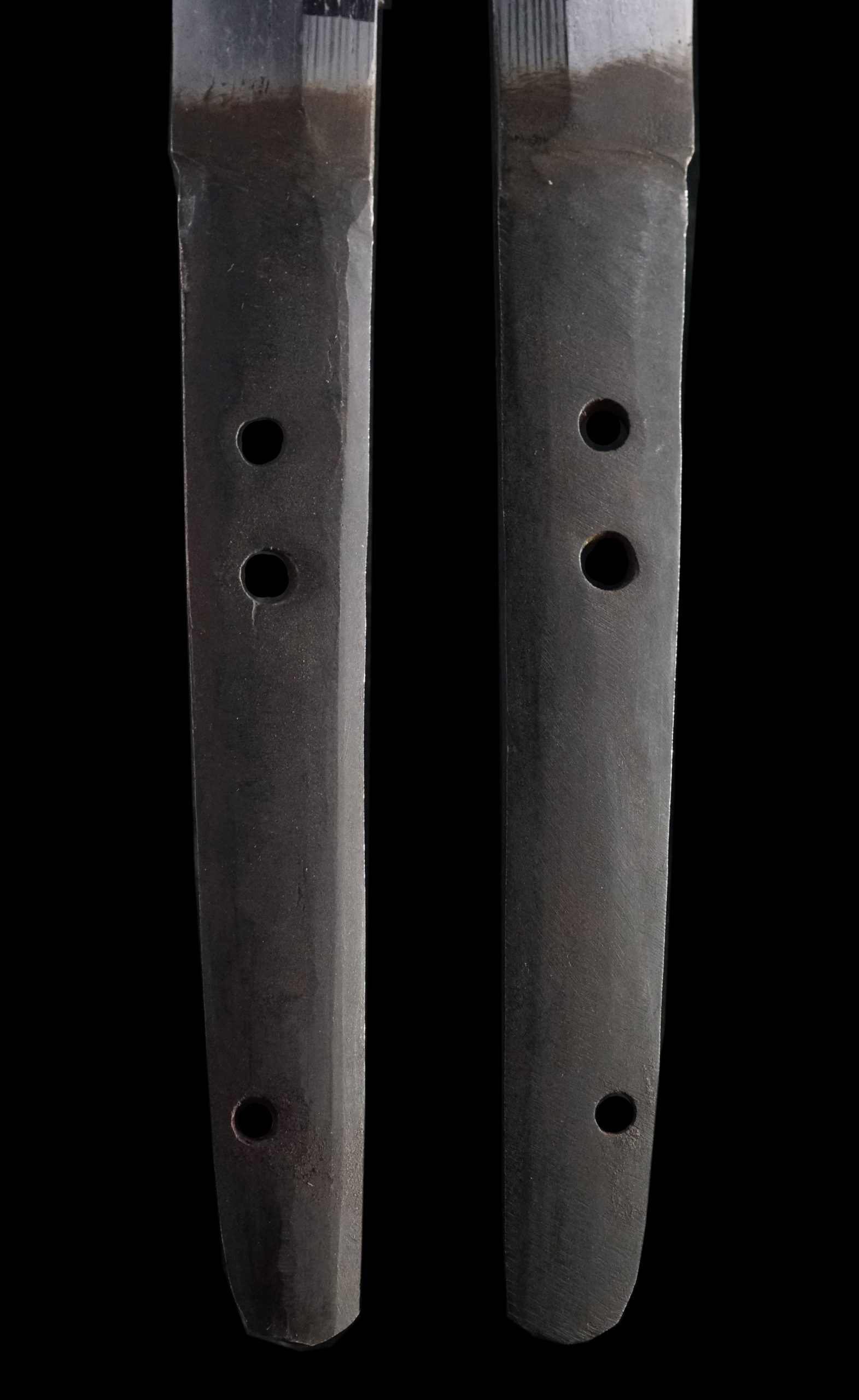
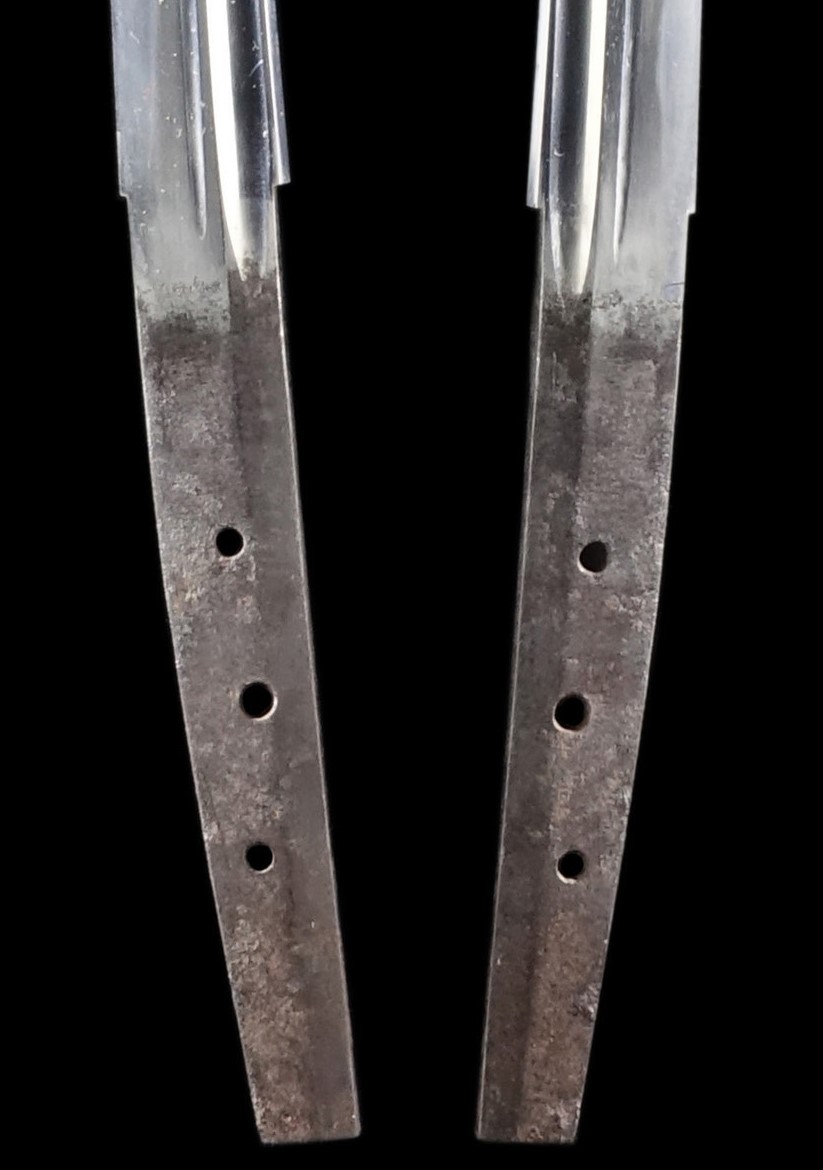
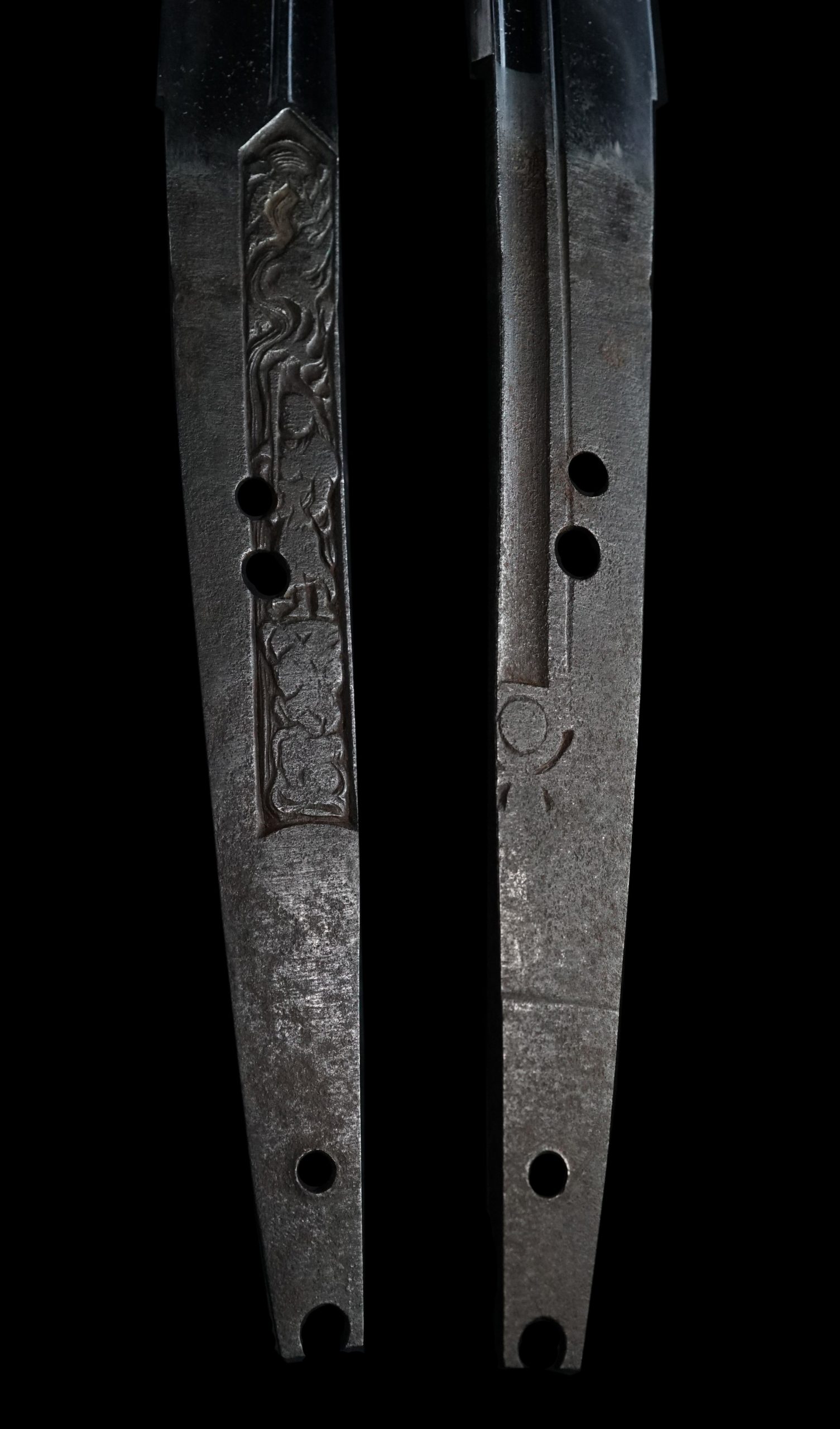
3) The swordsmith’s orientation
MUMEI should also come from those who just did not like carving MEI. There are plenty of expertise theories behind this case of MUMEI swords. Those who were known as MUMEI-swordsmiths – with the most famous one being MASAMUNE.
——————————————————————————————————
Above are all the basics about MEI. Did it help you figure out the different values of MEI / MUMEI Katana? At Samurai Museum Shop, we deal with both MEI and MUMEI Katana, all of which have been authenticated by Japanese sword specialists.
Would you like to come and have a look? We will see you in the next episode.
Samurai Museum
Email: order@samuraimuseum.jp
TEL:+81 3 6457 6411
order@samuraimuseum.jp
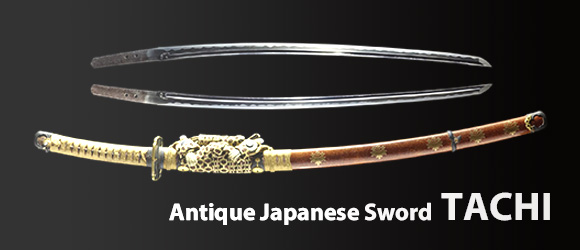
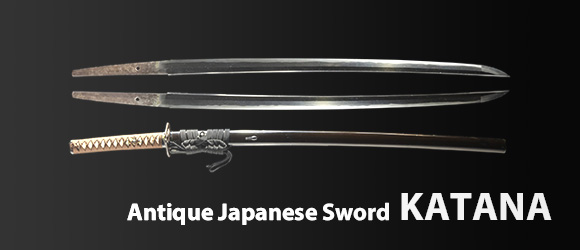
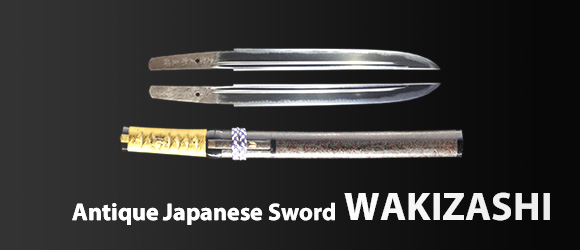
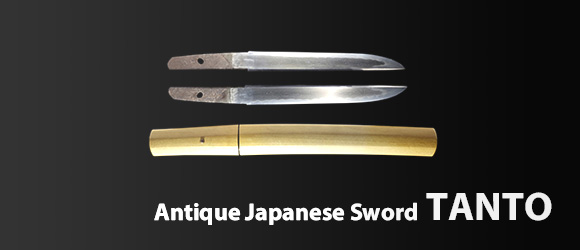
-
$13,898.01

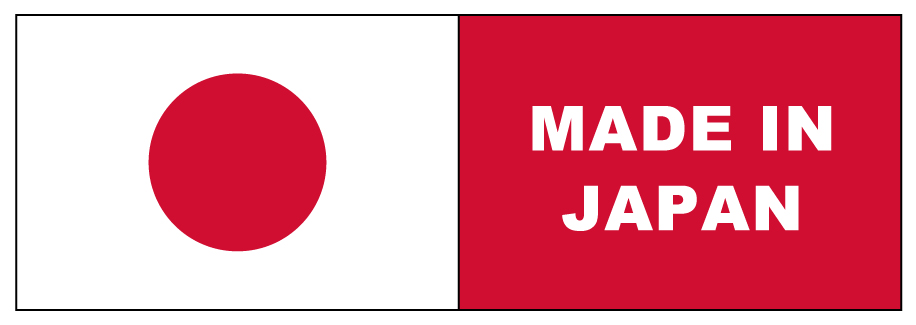
DELIVERY TIME : Approx. 1-1.5 months
*We ship from Tokyo, Japan. There might be delay in shipment depending on countries.
SHIPPING TO :
USA, UK, Canada, Mexico, Germany , Hong Kong, France, Australia
*Please contact us prior to purchase if your country isn’t listed.
INCLUDED : NBTHK Tokubetsu Hozon Certificate, Koshirae Mounting, Shirasaya Case, Traditional Sword Carrying Case, Sword Maintenance Kit, Full Exportation Support
| Category |
Katana ( SHINTO) |
| Age |
Early Edo Period (1641-1688) |
| Swordsmith |
Hizen Koku Jyu Omi no Daijyo Fujiwara Tadahiro
(肥前国住近江大掾藤原忠広) |
| Certificate |
NBTHK Tokubetsu Hozon Certificate |
| Location |
Hizen province (Today’s Saga prefecture) |
| Blade Size |
Cutting Edge Length: 72.4 cm (28.5 inches)
Curvature:1.66 cm (0.65 inches) |
More photos& videos available on request. Please feel free to contact us.
-
$10,739.37


DELIVERY TIME : Approx. 1-1.5 months
*We ship from Tokyo, Japan. There might be delay in shipment depending on countries.
SHIPPING TO :
USA, UK, Canada, Mexico, Germany , Hong Kong, France, Finland, Australia
*Please contact us prior to purchase if your country isn’t listed.
INCLUDED : NBTHK Tokubetsu Hozon Certificate, Koshirae Mounting, Traditional Sword Carrying Case, Sword Maintenance Kit, Full Exportation Support
| Category |
Katana ( KOTO) |
| Age |
Nanbokucho period |
| Swordsmith |
attributed to Suesa (末佐: Unsigned) |
| Certificate |
NBTHK Tokubetsu Hozon Certificate |
| Location |
Chikuzen Province (Today’s Fukuoka prefecture) |
| Blade Size |
Cutting Edge Length: 71.8 cm (28.2 inches)
Curvature: 1.1 cm (0.43 inches) |
More photos& videos available on request. Please feel free to contact us.
-
$27,164.30


DELIVERY TIME : Approx. 1-1.5 months
*There might be delay in shipment depending on countries
SHIPPING TO :
USA, UK, Canada, Mexico, Germany , Hong Kong, France, Australia
*Please contact us prior to purchase if your country isn’t listed.
INCLUDED : NBTHK Tokubetsu Hozon Certificate for Katana and Wakizashi , Shirasaya Case×2, Koshirae Mounting×2, Traditional Sword Carrying Case×2, Sword Maintenance Kit, Full Exportation Support
| Category |
Katana& Wakizashi ( SHINTO) |
| Age |
Early-Mid Edo period |
| Swordsmith |
The third-gen Yoshimichi (三代京丹波守吉道)
The fourth-gen Yoshimichi (四代京丹波守吉道) |
| Certificate |
NBTHK Tokubetsu Hozon Certificate for both blades |
| Location |
Yamashiro Province (Kyoto prefecture) |
| Blade Size |
Cutting Edge Length: 75.4 cm ( 29.7 inches)
Curvature: 1.30 cm ( 0.51 inches)
Cutting Edge Length: 50.0 cm ( 19.7 inches)
Curvature: 1.21 cm ( 0.47 inches) |
More photos& videos available on request. Please feel free to contact us.
-
$6,949.01


DELIVERY TIME : Approx. 1-1.5 months
*We ship from Tokyo, Japan. There might be delay in shipment depending on countries.
SHIPPING TO :
USA, UK, Canada, Mexico, Germany , Hong Kong, France, Finland, Australia
*Please contact us prior to purchase if your country isn’t listed.
INCLUDED : NBTHK Tokubetsu Hozon Certificate, Koshirae Mounting, Traditional Sword Carrying Case, Sword Maintenance Kit, Full Exportation Support
| Category |
Katana ( SHINTO) |
| Age |
Early Edo period (mid-late 17th century) |
| Swordsmith |
Sagami no Kami Fujiwara Kunitsuna (相模守藤原国綱) |
| Certificate |
NBTHK Tokubetsu Hozon Certificate |
| Location |
Echizen Province (Today’s Fukui prefecture) |
| Blade Size |
Cutting Edge Length: 71.5 cm (28.1 inches)
Curvature: 1.3 cm (0.51 inches) |
More photos& videos available on request. Please feel free to contact us.
-
$9,475.92


DELIVERY TIME : Approx. 1-1.5 months
*We ship from Tokyo, Japan. There might be delay in shipment depending on countries.
SHIPPING TO :
USA, UK, Canada, Mexico, Germany , Hong Kong, France, Finland, Australia
*Please contact us prior to purchase if your country isn’t listed.
INCLUDED : NBTHK Tokubetsu Hozon Certificate, NTHK Yushu Saku Certificate, Shirasaya Case (Plain Wooden Case), Traditional Sword Carrying Case, Sword Maintenance Kit, Full Exportation Support
| Category |
Wakizashi (SHINTO)
|
| Age |
Early Edo period (Early 17th century) |
| Swordsmith |
Izumi no Kami Fujiwara Kunisada (和泉守藤原国貞) |
| Certificate |
NBTHK Tokubetsu Hozon Certificate |
| Location |
Settsu province (Today’s Osaka prefecture) |
| Blade Size |
Cutting Edge Length: 54.8 cm (21.5 inches)
Curvature: 1.6 cm (0.63 inches)
|
More photos& videos available on request. Please feel free to contact us.
-
$3,790.37


DELIVERY TIME : Approx. 1-1.5 months
*We ship from Tokyo, Japan. There might be delay in shipment depending on countries.
SHIPPING TO :
USA, UK, Canada, Mexico, Germany , Hong Kong, France, Finland, Australia
*Please contact us prior to purchase if your country isn’t listed.
INCLUDED : NBTHK Hozon Certificate, Shirasaya Case, Koshirae Case, Traditional Sword Carrying Case, Sword Maintenance Kit, Full Exportation Support
| Category |
Wakizashi ( KOTO) |
| Age |
Early- Mid Muromachi period (Late 14th-Early 15th century) |
| Swordsmith |
attributed to Mihara (三原: Unsigned) |
| Certificate |
NBTHK Hozon Certificate |
| Location |
Bingo province(today’s Hiroshima prefecture) |
| Blade Size |
Cutting Edge Length : 53.8 cm ( 21.2 inches)
Curvature : 1.2 cm (0.47 inches)
|
More photos& videos available on request. Please feel free to contact us.
-
$6,317.28


DELIVERY TIME: Approx. 1-1.5 months
*We ship from Tokyo, Japan. There might be delay in shipment depending on countries.
SHIPPING TO:
USA, UK, Canada, Mexico, Germany, Hong Kong, France, Finland, Australia
*Please contact us prior to purchase if your country isn’t listed.
INCLUDED: NBTHK Hozon Certificate, Koshirae Case (Decorative Sword Mounting), Shirasaya Case, Traditional Sword Carrying Bag, Sword Maintenance Kit, Full Exportation Support
| Category |
Katana (KOTO :古刀)
|
| Age |
Late Muromachi Period |
| Swordsmith |
Sukemitsu (助光) |
| Certificate |
NBTHK Hozon Certificate |
| Location |
Unknown, possibly Suruga province (Today’s Shizuoka prefecture) |
| Blade Size |
Cutting Edge Length: 72.7 cm (28.6 inches)
Curvature: 2.1 cm (0.82 inches)
|
More photos& videos available on request. Please feel free to contact us.
-
$6,317.28


DELIVERY TIME : Approx. 1-1.5 months
*We ship from Tokyo, Japan. There might be delay in shipment depending on countries.
SHIPPING TO :
USA, UK, Canada, Mexico, Germany , Hong Kong, France, Finland, Australia
*Please contact us prior to purchase if your country isn’t listed.
INCLUDED : NBTHK Tokubetsu Hozon Certificate , Koshirae Case (Decorative Sword Mounting), Shirasaya Case, Traditional Sword Carrying Case, Sword Maintenance Kit, Full Exportation Support
| Category |
Wakizashi (SHIN SHIN TO)
|
| Age |
The third year of the Kyowa era (1803) |
| Swordsmith |
Tada Takakatsu (多田貴勝) |
| Certificate |
NBTHK Tokubetsu Hozon Certificate |
| Location |
Harima province (Today’s Hyogo prefecture) |
| Blade Size |
Cutting Edge Length: 40.2 cm (15.8 inches)
Curvature: 0.5 cm (0.19 inches)
|
Thank you for visiting our website. This sword was sold as each antique Japanese sword is one of a kind. However, we might be able to show you something similar because we have various types of swords available. Also, there are ones that aren’t listed on the website yet. Our customer service will help you find your ideal blade you will cherish for generations. Please feel free to contact us or check the list of swords. We will be more than happy to help you.
-
$2,842.78


DELIVERY TIME : Approx. 1-1.5 months
*We ship from Tokyo, Japan. There might be delay in shipment depending on countries.
SHIPPING TO :
USA, UK, Canada, Mexico, Germany , Hong Kong, France, Australia
*Please contact us prior to purchase if your country isn’t listed.
INCLUDED : NBTHK Hozon Certificate, Shirasaya Case (Plain Wooden Case), Traditional Sword Carrying Case, Sword Maintenance Kit, Full Exportation Support
| Category |
Wakizashi (SHINTO)
|
| Age |
Tenwa era (1681-1684) |
| Swordsmith |
Fujiwara Sadatsugu (藤原貞次) |
| Certificate |
NBTHK Hozon Certificate |
| Location |
Settsu province (Today’s Osaka prefecture) |
| Blade Size |
Cutting Edge Length: 59.2 cm (23.3 inches)
Curvature: 1.0 cm (0.39 inches)
|
More photos& videos available on request. Please feel free to contact us.
-
$2,526.91


DELIVERY TIME : Approx. 1-1.5 months
*We ship from Tokyo, Japan. There might be delay in shipment depending on countries.
SHIPPING TO :
USA, UK, Canada, Mexico, Germany , Hong Kong, France, Australia
*Please contact us prior to purchase if your country isn’t listed.
INCLUDED : NBTHK Hozon Certificate, Shirasaya Case (Plain Wooden Case), Traditional Sword Carrying Case, Sword Maintenance Kit, Full Exportation Support
| Category |
Wakizashi (SHINTO)
|
| Age |
Early Edo Period (1661-1673) |
| Swordsmith |
Hizen Koku Jyu Tadanori (肥前国住忠則) |
| Certificate |
NBTHK Hozon Certificate |
| Location |
Hizen province (Today’s Saga prefecture) |
| Blade Size |
Cutting Edge Length: 51.4 cm (20.2 inches)
Curvature: 1.2 cm (0.47 inches)
|
Thank you for visiting our website. This sword was sold as each antique Japanese sword is one of a kind. However, we might be able to show you something similar because we have various types of swords available. Also, there are ones that aren’t listed on the website yet. Our customer service will help you find your ideal blade you will cherish for generations. Please feel free to contact us or check the list of swords. We will be more than happy to help you.









